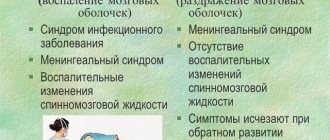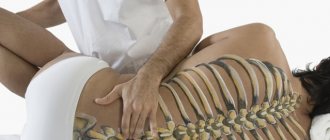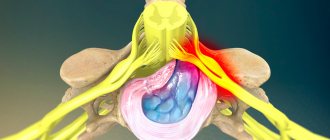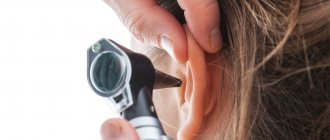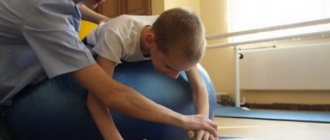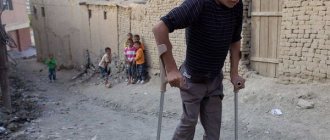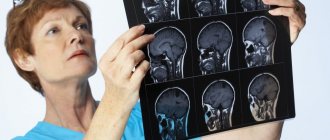Physical fatigue after minor exertion, deterioration of attention and everyday absent-mindedness, difficulties in remembering, headaches and constant apathy towards everything, lack of vital energy, sleep disturbances - such symptoms are common, but many people mistake them for fatigue (“You need to sleep on the weekend,” “It's time to go on vacation”) or even laziness.
Such an attitude towards one’s own health can lead to physical exhaustion, severe depression, loss of self-confidence and even the appearance of suicidal thoughts. After all, if nothing works out, where does high self-esteem come from?
Important
Astheno-depressive syndrome is a sign of exhaustion of the nervous system. The reasons for it can be very different, so you need to consult a specialist for diagnosis and treatment.
All these symptoms indicate a disease that requires competent and long-term treatment from a specialist.
What is astheno-depressive syndrome
Asthenic and astheno-depressive disorder are disorders that are characterized by excessive fatigue, fatigue after minor exertion, increased perception of stimuli (a person is irritated by bright lights, loud sounds), and anxiety. If, in addition to these symptoms, a person remains in a depressed, depressed mood for more than two weeks, then the disorder is called astheno-depressive.
Astheno-depressive syndrome can be an independent disease, can act as a sign of an organic disease (brain tumors, metabolic diseases, hormonal imbalance), or can be part of the structure of depression, bipolar affective disorder, sometimes even schizophrenia.
Somatoform dysfunction of the autonomic nervous system
The syndrome develops when there is a malfunction of the autonomic nervous system, which controls the functioning of internal organs, blood vessels, and is responsible for the course of physiological processes and the mobilization of the body as a whole.
The ANS consists of 2 sections: parasympathetic and sympathetic.
The sympathetic nervous system increases the heart rate, constricts blood vessels and increases blood pressure. Increases sweating and slows down intestinal motility. It relaxes the bladder, dilates the bronchi and pupil. Sympathy speeds up metabolism and activates the body as a whole.
The parasympathetic system has the opposite effect. But, despite the opposition of departments, normal well-being of a person is ensured by their coordinated work. Any malfunctions in the functioning of both systems cause various pathological sensations and syndromes, in particular, somatoform dysfunction.
There are 3 types of disorders:
- with a predominance of sympathy;
- with a predominance of parasympathetics;
- mixed.
According to the flow, stable and paroxysmal, with vascular and other types of crisis are distinguished.
Pathology can be primary, that is, it develops on its own, or secondary, after previous illnesses. Its symptoms manifest themselves under the influence of a psychotraumatic factor.
Such patients are characterized, first of all, by the appearance of vegetative signs: severe sweating, tremors of the limbs, paleness and redness of the skin.
Another group of signs expresses the dysfunction of internal organs under the control of the ANS:
- cough, shortness of breath, laryngeal spasm;
- tachycardia, arrhythmia, blood pressure changes. Heart pain does not have a clear localization and can be of various types. It happens that they are accompanied by a feeling of anxiety or fear. They are worse at rest, but go away during physical activity. Lasts from a few minutes to several days. Heart symptoms are so believable that they sometimes confuse even specialists;
- abdominal pain, bloating, difficulty swallowing; “bear disease” - diarrhea under the influence of stress;
- difficulty urinating, urinary incontinence;
- headaches, fatigue, poor sleep.
The complaints are numerous, but lack specifics. They signal a disruption in the functioning of several organs at once.
Patients are concerned about their condition, but still not to the same extent as hypochondriacs. They strive to find a way out of the situation and receive adequate treatment.
How to recognize the disease
Fatigue and tiredness are a normal reaction of the body to stress. We should talk about a disease when this condition does not go away even after a long rest or change of activity and persists for 2–3 weeks.
Symptoms that require you to consult a doctor:
- Nothing makes me happy. Things that used to bring you pleasure (hobbies, watching your favorite movies or hanging out with friends) begin to irritate, tire you, or bring tears to your eyes.
- Sleep disorders: you can’t fall asleep for a long time at night or have restless sleep, and during the day this makes you drowsy.
- Rest does not eliminate fatigue.
- Feeling exhausted after a load that was previously possible. Moreover, reducing the amount of work done does not improve the condition.
- Painful sensitivity to light or loud noise.
- A reduced mood level persists no matter what events happen in your life - good or bad.
- Mental abilities deteriorate, memory decreases. It becomes more difficult to concentrate on everyday activities, and absent-mindedness appears.
The most important thing is that the above symptoms persist for at least 2 weeks.
Important
Fatigue and depression may be accompanied by short-term vegetative crises (panic attacks). Without treatment, the disease “locks” a person at home, and panic does not allow him to even go outside.
Predisposed individuals are at risk of developing astheno-depressive syndrome with panic attacks. Short-term episodes of severe fear, panic with palpitations, cold sweat, and a feeling of shortness of breath can lead to a decrease in social contacts, loss of work, and even self-isolation of the patient.
Asthenovegetative syndrome in children after infectious diseases
In the development of an infectious disease, four periods are usually distinguished: latent (incubation), prodromal, peak of the disease and outcome. The latent period lasts from the moment of exposure to the etiological factor until the appearance of the first clinical signs of the disease. During this period, the body’s defenses are mobilized, aimed at compensating for possible violations, at destroying pathogenic agents and removing them from the body. The prodromal period is the time interval from the first symptoms of the disease to its full manifestation. The period of pronounced manifestations of the disease is characterized by the complete development of the clinical picture. With various infectious diseases, the child’s nervous system may suffer, which is clinically manifested by neurotoxicosis syndrome. Neurotoxicosis is a nonspecific response of the child’s body to the effects of viral, bacterial or viral-bacterial flora, characterized by predominant damage to the central (CNS) and autonomic nervous system. The occurrence of asthenic syndrome is associated with the depletion of the functional capabilities of organs and systems as a result of the disease, especially the nervous system when it is overstrained, as well as due to autointoxication or exogenous toxicosis. This is the most common clinical manifestation of the convalescence period. Fatigue for a long time, which is not compensated by full recovery, causes overload syndrome, followed by a state of exhaustion. A subjectively felt feeling of fatigue is primarily a signal of overload of central regulatory systems, unsatisfactory state of the body's energy resources and autointoxication with metabolic products. Prolonged fatigue, leading to exhaustion, is essentially the result of stress on the body, causing dysfunction of the regulatory systems - autonomic, endocrine and immune. If stress factors act for a long time, a reaction of the body may develop, which may result in functional changes in the form of autonomic dysfunction [1, 6]. Autonomic dysfunction syndrome (AVS) includes the manifestation of all forms of disturbance of autonomic regulation. Along with somatic manifestations: dizziness, headaches, palpitations, shortness of breath, thirst, bulimia, vomiting after eating, intolerance to certain types of food, low-grade fever of unknown origin, skin rashes, etc., emotional disorders of varying severity in the form of anxiety are detected in patients with VDS , sleep disturbances, causeless crying, as well as behavioral disorders, in particular, impulsivity, increased motor activity and excitability, attention deficit, which is clinically defined as asthenovegetative or psychovegetative syndrome [Vein A. M., 1981].
The interest and complexity of the problem of asthenovegetative syndrome lies in the fact that it is complex: medical, psychological and pedagogical. However, all experts agree that such a condition exists, it must be diagnosed and corrected correctly.
Research objectives
This study is devoted to studying the dynamics of the state of the autonomic nervous system of children with asthenovegetative syndrome after infectious diseases, as well as assessing the effectiveness of the drug Tenoten for children in this pathology.
Tenoten for children contains ultra-low doses of antibodies to the brain-specific protein S-100, created using a special technology specifically for children, has a calming, normalizing effect on mood and behavior, as well as a pronounced vegetative stabilizing effect [3, 5].
Criteria for inclusion of patients in the study:
- Age from 3 to 8 years.
- Presence of symptoms of VDS.
- The severity of SVD is mild to moderate.
Criteria for excluding patients from the study:
- The presence of decompensated diseases or acute conditions that may affect the conduct of the study.
- Presence of organic brain diseases.
- Severe renal or liver failure.
- Hypersensitivity to any of the components of the drugs used in the study.
- Use of vegetotropic and nootropic drugs during the study period and in the last two weeks before the study.
- Participation in other clinical trials within four weeks before enrollment in this study.
Research material
50 children aged 3 to 8 years (4.54 ± 0.18 years) were observed at the 5th Children's Infectious Diseases Hospital of Saratov, of which 52% were boys, 48% were girls who had suffered complicated respiratory viral and other airborne infections. droplet infections, occurring mainly with neurotoxicosis syndrome, as well as frequently ill children undergoing dispensary observation in the clinic.
For the study using random sampling, children were divided into two groups. In the main group (30 people), children during the convalescence period, along with symptomatic vitamin therapy, received Tenoten for children, 1 tablet 3 times a day for 4 weeks in combination with standard therapy. The control group (20 people) included children who received standard vitamin therapy and symptomatic therapy with the exception of drugs with vegetotropic activity.
There were no significant differences in age and gender indicators between the main and control groups of children.
The selected groups of children also did not differ significantly in the range of diseases suffered, their severity, and the nature of complications. The spectrum of diseases included viral and viral-bacterial infections of the respiratory tract (etiologically confirmed forms of influenza and other respiratory viral infections, severe forms of bronchitis and pneumonia, etc.), acute otitis media, severe and complicated forms of infectious mononucleosis, visceral forms of chickenpox, occurring with neurotoxicosis and vesicular rashes on internal organs. Data on diseases are given in the table.
The diagnostic examination included a clinical assessment of the manifestations of autonomic dysfunction, a psychological examination, a neurological examination, and electrocardiography (ECG).
The state of the autonomic nervous system was determined by the initial autonomic tone, autonomic reactivity and autonomic support of activity. The initial autonomic tone, which characterizes the direction of functioning of the autonomic nervous system at rest, was assessed by analyzing subjective complaints and objective parameters. The severity of psychopathological manifestations was assessed: fatigue, anxiety, emotional instability, etc. (modified A.M. Vein questionnaire). The intrasystemic autonomic tone was determined by the Kerdo index and the intersystemic autonomic tone by the Hildebrant coefficient. To assess the vegetative support of activity, which mainly reflects the state of the autonomous regulatory system, a clinoorthostatic test (COT) was performed. The functional state of the cardiovascular system was also considered based on electrocardiography data.
The level of attention was assessed using the SNAP-IV scale, Schulte tables, according to the results of the modified Pierron–Ruserapo method. Identification of short-term and long-term memory disorders, which indirectly reflect the severity of asthenia, was carried out using the 10-word and pictogram technique.
To determine the state of the emotional sphere of the subjects (anxiety, depression), achromatic and Luscher color tests were used.
After completion of treatment, all children underwent a repeated comprehensive examination to assess the effectiveness of therapy. In addition, parents of children were asked to evaluate the results of treatment using a ten-point analogue-visual scale, where 0 is a very bad rating, 10 is very good.
Research results
Before the start of the study, in all the examined children (without significant differences in both groups), using the A. M. Vein questionnaire, moderately severe psychopathological disorders were determined, in the form of instability of the emotional background (84%), increased anxiety (34%), fatigue (38%). ), distractibility (86%), sleep disturbances (74%), memory loss, as well as various somatic manifestations in the form of recurrent headaches (52%), dizziness (24%), weather dependence (12%), decreased appetite (64% ), dyspeptic disorders in the form of nausea, vomiting, bloating (44%).
The Kerdo index made it possible to determine the presence of intrasystemic dystonia in children who had suffered severe infectious diseases; it averaged 32.89 ± 0.99 in both studied groups, which indicated the prevalence of sympathetic influences on the body at rest.
Intersystem autonomic tone, assessed using the Hildebrant coefficient (average values were 3.98 ± 0.03), was mainly eutonic in nature.
The COP, which determines the autonomic support of the autonomic regulatory system, along with the normal sympathicotonic variant of the COP, reflecting the stability of hemodynamics in orthostasis (14% of cases), also revealed pathological variants. The hypersympathicotonic variant of COP, characterized by a sharp increase in systolic blood pressure (SBP) and diastolic blood pressure (DBP) and heart rate (HR) and caused by excessive activation of the sympathetic-adrenal system, occurred in the majority of cases - in 58% of children. The asymptocotonic variant of COP, caused by insufficient connection of the sympathetic part of the autonomic nervous system, in which SBP and DBP do not change or fall, heart rate remains normal or compensatory increases, was found in 28% of children with SVD. The asthenosympathetic variant of COP with a drop in SBP and DBP and a sharp increase in heart rate in the first minutes of orthostasis, followed by a hypersympathicotonic reaction, was identified in 2% of cases.
The functional state of the cardiovascular system was also considered based on ECG data. Sinus tachycardia according to ECG data was detected in children in 70% of cases, apparently as a result of extracardiac influences (increased sympathetic innervation of the heart or weakened vagal innervation against the background of psycho-emotional arousal) in the absence of organic heart pathology, the so-called “nervous tachycardia”.
The main psychopathological manifestations of SVD were inattention, hyperactivity, and impulsivity. They were assessed using the SNAP-IV questionnaire (Swanson J., 1992). The rate of inattention in the two groups on this scale did not differ significantly and amounted to an average of 53.33% (norm (Swanson J., 1992) - 0.40–1.82), the average rate of hyperactivity - 1.96 ± 0.32 ( norm (Swanson J., 1992) - 0.27–1.59) and impulsivity 2.13 ± 0.37 (norm (Swanson J., 1992) - 0.26–1.52) (p < 0.05 — reliability of differences compared to age norms).
The severity of asthenia indirectly affects intellectual-mnestic indicators, in particular operative memory: the higher the child’s fatigue in the period after an infectious disease, the more the memorization process suffers. Memory assessment in children was carried out using the ten-word memorization technique. The following indicators were recorded: 1) the number of repetitions required to reproduce 10 words; 2) the number of words reproduced after 1 hour.
In most cases, the subjects of both groups (there were no significant differences in the indicators of children in the main group with the comparison group) required 3 or more repetitions to reproduce 10 words, which indicated a decrease in mechanical memorization. At the same time, the number of words reproduced an hour after the start of the study decreased significantly, which was a sign of impaired dynamic memory in children with autonomic dystonia.
A pictogram was used as a technique for studying indirect memorization. The following indicators were recorded: 1) the number of concepts reproduced; 2) dynamics of reproduced concepts after 1 hour.
An assessment of the results of the pictograms in general showed that in children with SVD dystonia, the depicted images often did not correspond to real objects, which subsequently made their interpretation difficult. Indicators for the criterion of adequacy (validity of the connection between the proposed concept and its pictogram) averaged about 50%.
A decrease in the criterion “recoverability of concepts after a delayed period” was also noted. Only 14% of subjects were able to fully reconstruct the entire list of proposed concepts. The decrease in the indicator was associated with the frequent use of the same pictograms to convey different concepts, errors and all kinds of inaccuracies, replacing words with their synonyms, abbreviating complex concepts, etc.
The Luscher Projective Color Choice Test was used to assess emotional disturbances. When testing, the following indicators were taken into account: “The first and last color in the color series”; “Coefficient of total deviation from the autogenic norm”; “Indicator of vegetative coefficient”; "Indicators of anxiety and tension."
Testing carried out using the Luscher method reflected a statistically significant deviation of the color range predominantly chosen by the subjects from the autogenous norm. At the same time, the value of the vegetative indicator did not have such significant differences compared to age norms. Average statistical indicators of anxiety and tension, determined using the Luscher test, also did not have significant deviations from standard indicators (p < 0.05 - significance of differences compared with age norms).
Thus, a clinical examination of children who had suffered infectious diseases revealed that they had varying degrees of severity of VDS manifestations. Of course, such psychovegetative disorders affected the period of convalescence, worsened the quality of life and required their adequate correction.
Tenoten for children with a calming and pronounced vegetative-stabilizing effect was used as an alternative drug to correct the manifestations of SVD (Lobov M. A., 2008). The main group of children (30 people) received Tenoten at a dose of 3 tablets/day for a course of 1 month in combination with standard vitamin therapy. A control group of children (20 people) received standard therapy using drugs that did not have psychotropic or vegetotropic activity. At the end of the course of treatment, repeated clinical studies were conducted.
Taking the drug Tenoten for children for a month provided a significant (in comparison with the control group) improvement in indicators of psycho-vegetative status and a decrease in the frequency of somatoneurological disorders in children taking Tenoten for children, while in the control group of children these indicators remained almost at the same level (Fig. 1, 2).
An improvement in autonomic tone was noted not only in its psycho-emotional (fatigue, anxiety, emotional instability, distractibility, sleep disturbance), but also in its somatoneurological (headaches, dizziness, loss of appetite, dyspeptic disorders) component. The obtained data are shown in Fig. 1.
The results of the CPC have changed qualitatively. In children taking Tenoten for children, there was a normalization of vegetative support indicators (sympathicotonic version of COP) from 15.33% of children at the beginning of therapy to 46.67% (p < 0.05); in the rest, there was a clear trend towards improvement. In the control group, the COP indicators remained almost at the same level. The data is shown in Fig. 3.
Positive dynamics were revealed in relation to pathopsychological manifestations. After a course of use of the drug, a decrease in the severity of mnestic and behavioral symptoms (inattention, hyperactivity, impulsivity) was noted on average in 85% of children. All indicators of the SNAP-IV scale in children of the main group after treatment with Tenoten decreased significantly (p < 0.05). Indicators of hyperactivity and inattention decreased to normal values, absolute indicators of impulsivity also decreased significantly in the observed group.
According to the psychometric study, significant positive changes were revealed in patients with SVD in the main group when conducting memory and attention tests in comparison with the control group. Testing data revealed a clear improvement in mechanical and dynamic memory in 30% of children (p < 0.05), as well as in mediated memory in tests with a pictogram - an increase in the adequacy index to 75% (p < 0.05).
A dynamic assessment of the results of the Luscher color test revealed a relative stabilization of the psycho-emotional state in children of the main group, which was reflected in the preferred color scheme and its approximation to the autogenic norm (according to the coefficient of total deviation from the autogenic norm - p < 0.05). In children of the control group, the determined indicators did not have statistically significant changes.
At the end of the study, parents assessed the results of treatment using a ten-point analogue-visual scale. On average, the success of treatment in the main group was rated at 7-8 points, in the control group - at 4-5 points.
conclusions
- The study showed that children who have had infectious diseases have varying degrees of severe symptoms of asthenovegetative syndrome (AVS) in the form of psychoemotional (fatigue, anxiety, emotional instability, distractibility, sleep disturbance) and somatoneurological (headaches, dizziness, decreased appetite, dyspepsia) disorders.
- Asthenovegetative disorders negatively affect the process of convalescence in children after severe infectious diseases, prolonging this period and worsening the quality of life of patients.
- The use of the drug Tenoten for children after infectious diseases at a dose of 1 tablet 3 times a day leads to normalization of autonomic tone and support, reduces the frequency of somatoneurological manifestations of autonomic dysfunction, which contributes to a faster completion of the recovery period.
- Tenoten for children eliminates manifestations of asthenia, stabilizes the psycho-emotional state of children: improves mood, calms, helps reduce irritability and moodiness, facilitates learning processes (memorization, concentration, perseverance).
- The drug Tenoten for children is safe in patients of senior preschool and primary school age. No side effects were noted during use of the drug.
- The proven calming, pronounced vegetotropic and antiasthenic effect of the drug Tenoten for children allows us to recommend it for use in children with various manifestations of vegetative-vascular dysfunction after infectious diseases.
For questions regarding literature, please contact the editor.
E. V. Mikhailova, Doctor of Medical Sciences, Professor T. Ilyicheva Saratov Regional Children's Infectious Diseases Clinical Hospital, Saratov State Medical University, Saratov
Diagnosis of astheno-depressive disorders
The following methods help to find out the causes of asthenic-depressive disorder:
- Clinical and anamnestic examination is a conversation with an experienced and qualified psychotherapist who identifies symptoms and assesses what may cause the disease.
- Pathopsychological examination - performed by a medical psychologist. The specialist records deviations from the norm, which are revealed in tests of thinking, attention, and memory.
- Instrumental and laboratory research methods are indicated for differential diagnosis with organic disorders (EEG) and endogenous diseases, including schizophrenia (Neurotest, Neurophysiological test system).
- Consultations with related specialists (neurologist, sexologist, psychiatrist) - if necessary.
Why does the disorder develop?
Somatoform disorder is a disease of a psychological nature in which the symptoms of damage to internal organs are functional, not organic.
Such dysfunction is detected in 0.5% of the world's population, and it affects mainly women. The reason lies, first of all, in the psychological state of a person.
The first group of factors influencing the occurrence of the syndrome is heredity and character traits. For example, people with asthenoneurotic and hysterical types of character are more likely to develop it. They are characterized by hypersensitivity, timid or demonstrative behavior. Such people are characterized by rapid nervous exhaustion; as a rule, they are pessimistic.
The second group is psychogenic traumatic external influences. These include acute stress factors, when a powerful psychological blow at once leads to a disorder of nervous activity. This could be the loss of a loved one, a decrease in social status, or a situation of severe fear.
Chronic stress occurs as a result of systematic mental and physical overstrain, lack of positive emotions, unmet needs and excessive demands on oneself.
It is worth noting that somatoform disorder very often develops in people who are emotionally stingy, hide their feelings, and do not know how to express them. And since emotions need a way out in any case, they find it in this unique way. A similar state can accompany members of religious families, where an atmosphere of strict morality reigns.
Other factors that provoke the disorder include complicated pregnancy, trauma, infections, and some somatic diseases.
The main causes of asthenic syndrome after coronavirus
Weakness and loss of strength after suffering from COVID-19 are associated primarily with the peculiarities of the pathogenesis of this disease. The fact is that the causative agent of the infection is distinguished by its tropism for specific receptors of cell membranes, which are called ACE 2 (angiotensin-converting enzyme of the second type). The virus “attaches” to it using the S-protein (in its spatial structure it resembles a spike, so its name comes from the English word “stick”). After this, the pathogen easily penetrates the cell, its outer shell, the capsid, is destroyed, and viral RNA is released.
Further division (replication) of the coronavirus infection pathogen occurs with the help of cellular organelles; roughly speaking, the cell ceases to perform its functions and “works” only on the virus. After replication is completed, “free” RNA penetrates into the intercellular space and the cycle repeats again.
Initially, when doctors “worked” with the first patients, experts were convinced that such pathological changes occur only in the lung tissue. However, as information accumulated, it was found that covid can also penetrate the neurons of the brain, liver, kidneys, blood vessels, and smooth muscle tissue. This explained the rapid development of multiple organ failure in the acute phase of the pathology and various, often unexpected complications after coronavirus.
Thus, after recovery, cases of heart attacks, strokes, and lesions of the urinary system (pyelonephritis and glomerulonephritis, renal failure) were recorded. One of the specific symptoms of “corona” is the loss of smell and taste, which is also associated with damage to the central nervous system. And an analysis of data obtained from different countries showed that the frequency of such complications exceeds 70%.
But one of the most common residual symptoms remains severe weakness after coronavirus. In most patients who have had an infection, its pathogenetic cause is:
- direct damage to nervous system cells;
- consequences of severe intoxication: the immune system reacts sharply to infection, immune defense processes are accompanied by metabolic disorders, a massive release of toxins into the blood;
- violations of the filtration function of the liver due to side effects of antibacterial and antiviral drugs used to treat Covid;
- loss of appetite, and even more so - transfer of the patient to parenteral nutrition in intensive care, artificial ventilation and intensive drug therapy;
- oxygen starvation: in severe cases, saturation decreases to critical levels, but even after suffering from coronavirus, hypoxia persists due to fibrosis of the lung tissue.
Asthenia: somatic or mental disorder?
Covid is not only physiological, but also severe psychological stress for the body. Daily news is sometimes more reminiscent of reports from a war zone, unified treatment protocols have not been fully developed, and the rather high mortality rate of COVID-19 has already been confirmed (especially in patients at risk).
A positive test result, long-term, physically and financially debilitating therapy, and a severe clinical picture very often become the cause of depressive and anxiety disorders. And one of the “classic” symptoms of such psycho-emotional disorders is weakness and loss of strength. The likelihood of such a scenario is higher in women, people exposed to stress factors, prone to hypochondria, anxiety, and the elderly.
Treatment of asthenia
Treatment of asthenia can be carried out in different ways, but all of them are aimed at relieving the symptoms of the disease.
Having diagnosed asthenia, doctors usually prescribe the patient drug therapy, consisting of antidepressants. This is due to the fact that in most cases, people with symptoms of asthenia often also have signs of depression. Therefore, until depression is eliminated, it is simply impossible to talk about successful and effective treatment of asthenia. In some cases, taking small doses of antidepressants helps improve sleep and relieve pain. Sometimes doctors prescribe sleeping pills for these purposes.
For the most effective and efficient treatment of asthenia, a method called the “dual approach” is used. It combines a course of psychological counseling with a special program of therapeutic and physical exercises. The development of an exercise program is carried out by a physiotherapist, whose tasks include selecting individual physical activity for each patient individually. Psychological consultation is aimed at identifying external and internal factors that have an adverse effect on the patient, and teaching the person how to control them.
How to treat asthenic syndrome after covid
In order to get rid of the consequences of coronavirus as soon as possible, you must strictly adhere to all doctor’s prescriptions, take medications not prescribed by the doctor, and changing the dosage is possible only after a preliminary consultation.
Nutrition correction
The target calorie intake is 30 kcal/kg, but after a stay in intensive care, the amount of food consumed must be increased very carefully. The daily requirement for protein is up to 1 g/kg. The menu is selected individually, taking into account the general condition, concomitant diseases and the presence of allergies to certain products.
If the patient cannot “gain” the necessary calories and protein from the daily diet, additional nutritional supplements are prescribed. They should be taken for a minimum of 4-5 weeks.
Restoring exercise tolerance
Despite the weakness after illness, the patient needs to regularly perform a course of exercises (preferably with monitoring of saturation, blood pressure and pulse). Cardio exercises are carried out 4-6 times a week, strength training - 2-3 times. Naturally, we are not talking about serious sports loads.
Exercises on an exercise bike or treadmill (they can be replaced by a walk in the fresh air), squats, simplified versions of the “plank,” and lunges are suitable. You need to start with a minimum load and gradually increase it. Until your well-being normalizes and weakness disappears after coronavirus, you should abandon dumbbells, weights and other sports equipment - it is better to increase the number of approaches or the duration of the session.
Drug therapy
In addition to the drugs prescribed by a pulmonologist or infectious disease specialist to restore respiratory function, activity of the cardiovascular system and prevent somatic complications, the following are prescribed:
- vitamins;
- antioxidants;
- restoratives;
- medications to correct metabolic disorders;
- medications to restore intestinal microflora and normal digestion;
- hepatoprotectors;
- sedatives, antidepressants (for symptoms of mental disorders), etc.
You can cope with asthenia on your own, but it will take a lot of time, and it is not a fact that you will be able to avoid numerous complications. Therefore, experts recommend undergoing a comprehensive recovery program in a rehabilitation center, where proper nutrition, rest, fresh air, doctor’s supervision, and various physical procedures are provided.
Symptoms of ANS
Characteristic manifestations of asthenoneurosis are rapid fatigue and chronic fatigue. Children have difficulty shifting their attention, their thinking is inhibited, and their memory is weak. Schoolchildren are unable to concentrate in class, they are fussy, and motor reflexes are noticeable. Teachers usually recognize the initial phases of the syndrome as bad manners, so they complain to parents, but they are in no hurry to visit the clinic.
The next typical category of symptoms is psycho-emotional disorders. The child is subject to sudden mood swings for no apparent reason; he experiences nervousness and increased irritability. Usually there is a pathologically bad mood, which gradually develops into depression. Teenagers react too emotionally to even quite minor events. Typical symptoms of the disease are:
- moodiness;
- enuresis;
- frequent headaches;
- mood swings;
- weak immunity, prone to colds;
- irritability, manifestations of anger, aggression;
- increased sweating;
- loss of appetite;
- low academic performance;
- nausea in transport;
- poor social adaptation.
Asthenoneurosis is manifested by touchiness, the presence of phobias, aggression, and the search for physical ailments. Children feel broken and sick, although in reality there is nothing like that.
Types according to ICD10
The international classification defines two main options for the development of pathology:
- Hyperdynamic. With this nature of the disease, increased excitability, absent-mindedness, disinhibition, and loss of attention are manifested. Also obvious signs are emotional instability and insomnia.
- Hypodynamic. Provokes reduced activity, bad mood, excessive calmness. The child exists inside his own world; he reacts weakly to the changing reality. There may be problems with speech development, inadequate perception of smells and extraneous sounds.
Literature:
- Ivanova G.E., Shmonin A.A., Maltseva M.N., Mishina I.E. and others. Rehabilitation assistance during the epidemic of the new coronavirus infection COVID-19 at the first, second and third stages of medical rehabilitation. — Physical and rehabilitation medicine, medical rehabilitation, 2, 2021.
- Shakirova I.N., Dyukova G.M. Asthenia is an interdisciplinary problem. State Scientific Center Institute of Immunology. PMGMU named after. THEM. Sechenov, Moscow. — Difficult Patient, No. 5, T. 10, 2012.
- Yudelson Ya.B., Makarova M.A., Kugeleva A.O. Treatment of functional asthenia. - Bulletin of the Smolensk State Medical Academy, 2003, No. 4.
- Belopasov V.V., Yashu Y., Samoilova E.M., Baklaushev V.P. Nervous system damage due to COVID-19. - Clinical practice, T. 11, No. 2, 2021.
The text was checked by expert doctors: Head of the socio-psychological service of the Alkoklinik MC, psychologist Yu.P. Baranova, L.A. Serova, a psychiatrist-narcologist.
CAN'T FIND THE ANSWER?
Consult a specialist
Or call: +7 (495) 798-30-80
Call! We work around the clock!
Content:
- The main causes of asthenic syndrome after coronavirus: 1.1. Asthenia: somatic or mental disorder?
- Features of the clinical course of asthenia after Covid.
- Diagnostic principles: 3.1. Indications for emergency medical consultation.
- How to treat asthenic syndrome after covid: 4.1. Nutrition correction. 4.2. Restoring tolerance to physical activity. 4.3. Drug therapy.
According to doctors, residual symptoms after recovery from COVID-19 can persist for quite a long time. But the most unpleasant and exhausting (primarily psychologically) is the feeling of constant fatigue, weakness and loss of strength. How serious are these symptoms? Is there a way to quickly return to your normal lifestyle?

